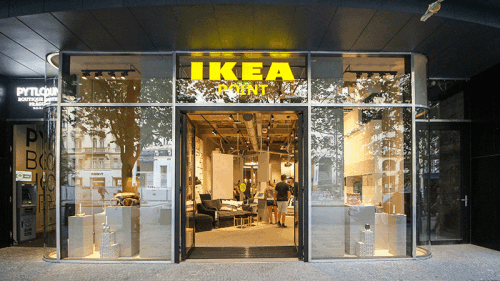Economic stimulus funds are driving one of the biggest increases in U.S. construction spending the industry has experienced in a long time.
While it is probably impossible to determine with any precision how much of the $787 billion in federal economic stimulus funds is making its way into actual real estate developments, there is little doubt that the total will ultimately run into billions and billions of dollars. Projects adding value to real estate via leveraged stimulus infusions are under way, or on the way, in all four corners of the country—and a whole lot of places in between. Government contracts, grants, and loan allocations to individual ventures run from a mere few hundred thousand dollars to tens of millions.
Public infrastructure projects such as roads, bridges, and rapid transit have received the largest allocations of stimulus funding, but capital is also helping kick-start stalled transit-oriented, mixed-use mega developments, widely varying affordable housing ventures, and some construction and improvement projects at universities and other educational institutions.
Also tapping federal funding are notable private commercial developments large and small—from huge new manufacturing plants to modernized small-business facilities. Along with public benefits, most of the stimulus-funded ventures generate design, engineering, and construction jobs, with many likewise providing an abundance of permanent positions.
The latest news from across the country illustrates the array of project sizes and types funded in part through the stimulus legislation, more formally known as the American Recovery and Reinvestment Act (ARRA) of 2009.
In the Pacific Northwest, the Housing Authority of Portland secured a $3.3 million ARRA grant through the U.S. Department of Housing and Urban Development for construction of the $29.8 million Resource Access Center—an eight-story, 106,000-square-foot (9,800-sq-m) homeless services and housing center now under construction in the Old Town district.
In southern California, Amtrak’s 58,000-square-foot (5,400-sq-m) progressive maintenance facility, a $24.5 million project under way at the Los Angeles train yard, is one of the region’s largest stimulus allocations.
In south Florida, construction has just begun on Miami’s $100 million Brownsville Transit Village, a multi-phase, transit-oriented, mixed-use, affordable housing project for which lead developer Carlisle Development Group is tapping stimulus programs to fill the void left by vanished tax credit equity.
In the Northeast, a $15 million stimulus grant helped launch infrastructure construction for the long-planned Assembly Square, another large transit-oriented, mixed-use project in Somerville, Massachusetts, ultimately expected to include millions of square feet of business space and about 2,100 residential units, in addition to a commuter rail station.
And in the hard-hit Midwest, the first U.S. high-speed passenger rail route—the Chicago-to-St. Louis route—created with stimulus money will begin construction after having recently received $1.1 billion. Stimulus funds targeting job creation in the energy and environmental fields are helping finance development of several Michigan plants that will manufacture electric-vehicle batteries and related energy storage products—and in some cases, vehicles themselves. About $2.4 billion in federal stimulus funding is slated for such projects, including nine-figure grants financing construction of plants in Midland, Holland, Romulus, and Livonia.
The more tactical capital injections stimulating shorter-term employment are peaking this year, says Michael Balsam, chief strategy officer at government contracting consultant Onvia Inc. in Seattle, and the transition is being made toward longer-term, strategic investments in industries such as energy, health care technology, and broadband expansion.
Meanwhile the taxpayer injections are spawning a hefty dose of job-creating real estate development activities. Combining contracts already awarded, additional in-the-pipeline allocations, and authorized future expenditures, more than $1 billion in stimulus funds is supporting construction of office and retail projects, according to data Onvia crunched for Urban Land.
Also helping stimulate development activity is more than $1.1 billion for new and improved educational facilities, $260 million for single-family residential construction, $244 million for multifamily construction, and more than $100 million for industrial construction.
As Assembly Square illustrates, many development projects tapping federal stimulus funds are part of large, mixed-use projects financed in part with nonstimulus public funding, as well as private debt and equity.
Among the highest profile of these projects is the long-anticipated Moynihan Station mixed-use project in midtown Manhattan, ultimately slated as an expansion and improvement of the Penn Station transit center. The first $220 million phase has been allocated $83.3 million through the Transportation Investment Generating Economic Recovery (TIGER) stimulus grant program. Subsequent phases will include substantial new office and retail space. Due to rules governing when the grant monies have to be spent, “the TIGER grant is going to ensure that construction begins soon, before the end of the end of the year, says Juliette D. Michaelson, senior planner with the Regional Plan Association, an urban planning advocacy group in New York City.
Stimulus-funded financing programs likewise are generating affordable housing development that otherwise would have been delayed because of depressed demand for low-income housing tax credits (LIHTCs). Columbia, Maryland–based Enterprise Community Investment,a leading affordable housing sponsor, has been quick to tap into the Tax Credit Assistance Program (TCAP) and the Section 1602 credit exchange program. Both of these stimulus programs provide gap equity for projects allocated LIHTCs but unable to attract sufficient equity amid the profit-eroding recession.
“TCAP helped fill the funding gaps left by reduced credit pricing, and [the Section 1602 program] enabled deals to get done in geographic areas where there was little investor interest,” says Raoul Moore, an Enterprise regional vice president.
State housing finance agencies allocate stimulus funds from these programs to specific projects; in large states, this can amount to hundreds of millions of dollars. For instance, the Florida Housing Finance Corp. allocated $21.77 million in Section 1602 program funds to each of Brownsville Transit Village’s first two phases. And the Texas Department of Housing and Community Affairs alone reportedly has almost $600 million of federal stimulus funds available to jump-start shovel-ready affordable housing developments.
Some stimulus dollars are also funding development on college campuses, such as a $34 million, 86,000-square-foot (8,000-sq-m) research center at the Nova Southeastern University Oceanographic Center in Dania Beach, Florida. The project, dubbed the Center of Excellence for Coral Reef Ecosystem Science, was awarded a $15 million stimulus grant.
Federal government offices account for some of the largest individual real estate development projects funded at least in part with stimulus dollars. Among the most noteworthy of many major projects in the Washington, D.C., vicinity is cnstruction of the giant Department of Homeland Security headquarters campus, which is under way at the reconfigured Saint Elizabeths Hospital site and supported by $450 million in U.S. General Services Administration stimulus funds.
At the other end of the size spectrum, some stimulus dollars are also finding their way into private property development ventures via enhancements to Small Business Administration (SBA) loan guarantee programs. While stimulus allocations are funding additional guarantees under SBA’s popular 7(a) loan program, most of the SBA-guaranteed loans funding real estate development pertain to the SBA 504 program, which helps small business owners expand or build facilities. The key enhancement entails having the SBA guarantee repayment of nearly 90 percent of the loan amount, up from the traditional 40 percent.
For instance, near the mouth of the Columbia River in historic—and economically hurting—Astoria, Oregon, microbrewers/restaurateurs Chris Nemlowill and Jack Harris tapped one SBA loan to acquire the building housing their Fort George Brewery & Public House, and another to fund extensive improvements to that building and an adjacent one into which their brewing operations are expanding. The pub is growing into a second-story loft as well as outdoor deck and beer garden spaces, and the brewing operation’s production capacity should soon grow fivefold with the additional facilities next door. “The space works perfectly for us,” Nemlowill notes, adding that enhanced guarantees helped keep the 504 loan’s interest rate at an attractive 5.5 percent.
According to data the SBA provided to Urban Land, nearly 27 percent of the proceeds of stimulus-enhanced SBA 504 program loans have funded construction activities since initial programs were implemented in February 2009. That comes to nearly $3 billion in construction projects out of just under $11 billion in total enhanced 504 program loans closed through July 2.
Of course, in a polarized political environment, injecting $787 billion of taxpayer capital into the economy does not come without controversy. For instance, critics have suggested that investments should be better targeted toward generating permanent private sector jobs rather than temporary government positions. And some have suggested that replacing tax credit equity with stimulus dollars removes the watchdog role private investors bring to project performance. Others question whether public funding of battery factories makes sense if they do not pencil out via private capital markets. And some do not think foreign-owned participants should benefit from federal investments, as is the case in many instances.
Yet absent the stimulus dollars, overall construction activity across the United States would almost certainly remain mired in a staggering slump, observes Ken Simonson, chief economist with Associated General Contractors of America (AGCA).
“The stimulus is clearly driving one of the biggest increases in construction spending the industry has experienced in a long time,” he says, citing AGCA figures indicating a 2.7 percent gain in April from a month earlier to a seasonally adjusted annual rate of $869 billion.
“Assuming the economy continues to expand, privately funded construction should experience a rebound starting in 2011,” Simonson adds. “But for now, stimulus funding remains the main source of support for nonresidential contractors.”




